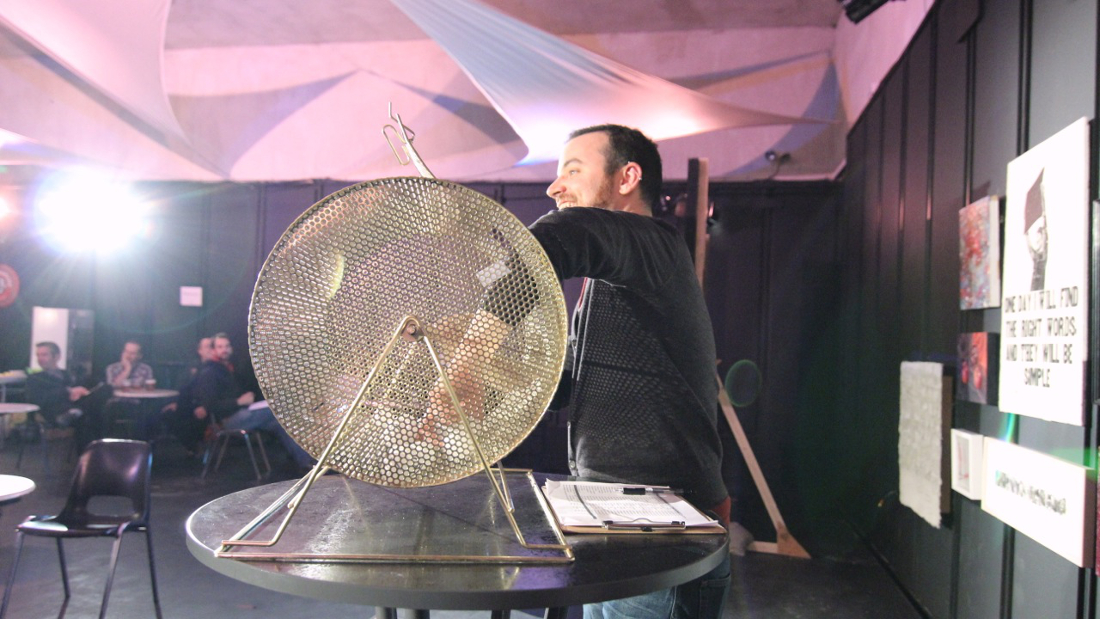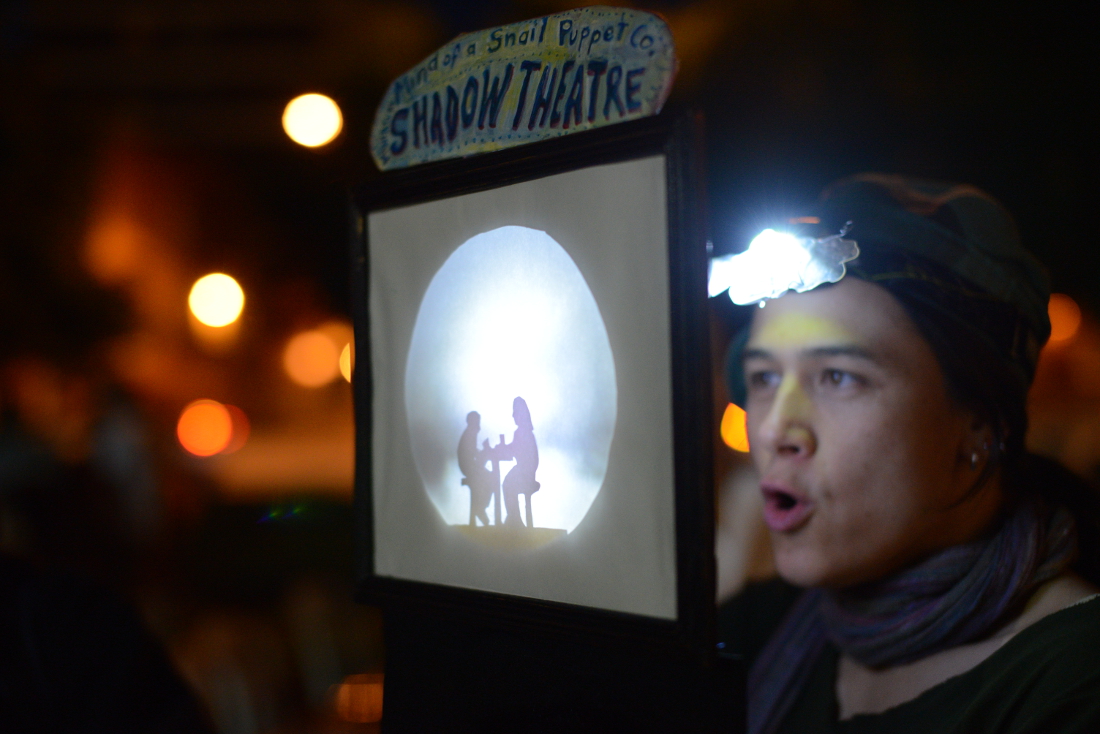
To be almost entirely glib about it, my artistic contribution to the Ottawa Fringe Festival involves pulling names out of a hat.
To be slightly less glib, my artistic contribution to the Ottawa Fringe Festival probably goes unnoticed by the majority of our audiences.
To be entirely sincere about it, how can I hope to make any sort of artistic contribution to the Ottawa Fringe Festival all while staying true to the Fringe concept and ideals, attempting to marry the needs of our various artist stakeholders – emerging artists cutting their teeth; pros working out the kinks on something new; touring performers trying to keep their heads above water on the road; someone with a story to tell trying out theatre for the first time; everyone and anyone in between – and remaining open and accessible to audiences?
In September 2013 I changed jobs, moving from GCTC – where I ran the undercurrents festival – to the Ottawa Fringe (but for the sake of this writing let’s momentarily forget undercurrents will move to Arts Court and be produced by the Ottawa Fringe starting in February 2015). The two festivals couldn’t be more different: undercurrents is a six-show, curated festival of original Canadian work taking place in a single venue; the Ottawa Fringe features 60 companies chosen via lottery, across five regular venues and (in 2014) nine BYOVs, hosting local, national, and international artists.
Admittedly, moving from producing a curated festival to a non is a bit of a culture shock, if only because running a Fringe takes so much out of your control (and I like to be in control. Probably why I got into directing). Besides the obvious answer of festival programming, Fringe producing takes a good portion of the marketing out of your hands, as well as control over the majority of your venues (sometime I’ll tell you about the bar used as a BYOV that instituted a one-drink minimum without telling us, and then told ticket-holding audience members they would have to leave if they didn’t comply). And as much as Fringes rely upon and couldn’t exist without the army of volunteers who come out in 17 Canadian cities each summer, it’s inevitable that when working with more than 300 of them there will be some miscommunications along the way.
What we can control, however, is the audience experience at our festival. As theatre makers, aren’t we always (or shouldn’t we always be) obsessed with what the audience experience be when they buy a ticket to our show? How can we expand that obsession to cover 400+ performances over 11 days? Ottawa Fringe has shown excellent growth over the past few years precisely because the festival has poured a lot energy and resources into creating an inviting atmosphere for patrons, into giving them a festival experience – whether or not the show(s) they saw changed their perception of the medium or had them looking at their smartphone 7 minutes in. As a Fringe we can’t curate our programming, but we can certainly curate the audience experience when they attend our festival.
For Ottawa this curation is about more than ancillary artistic activity like concerts or free late-night programming or cabaret nights (though we certainly include our share of those as well), but also about making the ticket buying process as smooth as possible, an inviting Courtyard and festival bar, a well-designed and easy to navigate website, clean and accessible festival venues, and knowledgeable staff and volunteers. It’s the Fringe artist’s job to make the best art possible; it’s the Fringe festival’s job to create the best possible circumstances for them to succeed.
Another way we “curate” the Fringe is by attracting high caliber artists to Ottawa. Performers who have toured the circuit recognize that each stop has its own quirks and unique personality, and as an organization we need to be aware of what we can offer artists (both touring and local) besides fame and fortune. As a medium-sized Fringe Ottawa can’t compete with the revenue potential of a Winnipeg or Edmonton, but what we can offer has its own value: a warm, loyal, and growing audience base; excellent venues and technicians; and – not to be underestimated – a great nightlife and social scene (I’ll argue to the day I die that the Ottawa Fringe Courtyard is the best of its kind on the circuit).
Because of this, local professionals have come to use the Ottawa Fringe as a space to practice and experiment – for either the first public performance of a work in progress, or maybe to try their hand at writing or directing or writing and directing for the first time. That’s part of the draw for our audience: “See it here first.” With a great number of local professionals participating in the Fringe it has become even more attractive to students and emerging artists who want to showcase themselves alongside their established peers. And as we’re positioned at the beginning of the summer Fringe circuit, touring performers have found Ottawa a great place to get their show into shape in front of a friendly audience before moving on to the more lucrative western stops.
Sure, as a Fringe we leave programming to the Fates, and some years will inevitably be stronger artistically than others – but we certainly have the capacity to create the best conditions possible for audiences to find our artists. If we create those conditions we’ll attract broader base of artists to our lottery, which will increase the chances of strong and interesting work being in the festival, which will attract more audiences, which will attract a still broader base of artists to our lottery, which will…
There’s an art to that, I think.










